We love that you are here, and for that reason, we are going to give you the best advice so that you choose the best trekking poles depending on your needs and the use you are going to give them.
It is true that 12 years ago virtually no one used trekking poles. Now it is rare to see someone in the middle of an adventure without them, and many hikers use them daily. Trekking poles help improve balance on uneven terrain and save energy by going up and down steep trails. Some studies have shown that trekking poles can reduce the force of impact up to 40% in the knees, something that a backpacker or hiker of any age appreciates.
Types Of Trekking Poles
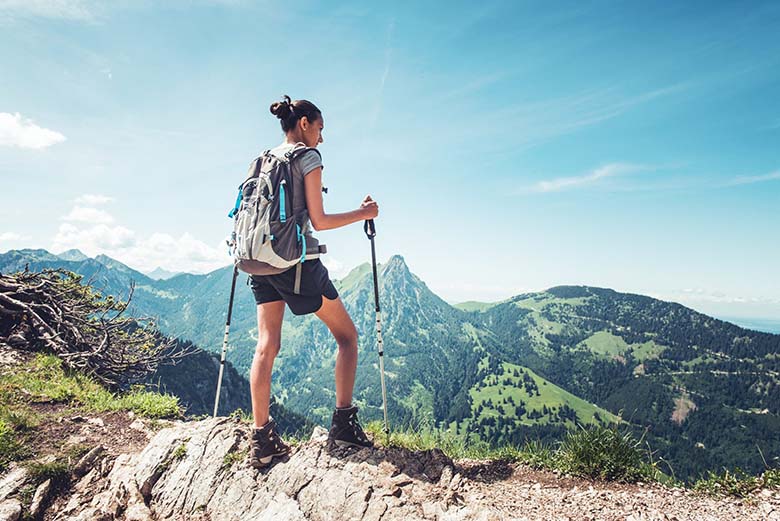
Trekking Poles With The Adjustment Lever
Trekking poles with lever lock are generally easier, more durable and faster to adjust than torsion blocking poles. When testing the two types, you see clearly that the sticks with lever locking mechanisms are more comfortable to use than the torsion lock and are less problematic. The use of this type of canes is becoming standard, and for what six years ago most manufacturers have included this style of trekking poles in their catalogs.
Number Of Sections And Design Of The Trekking Poles
There are three main designs used by almost all trekking poles: two telescopic parts, three telescopic sections, and the folding ones. Each style with its advantages and disadvantages.
Canes With Two Telescopic Sections
The canes with two segments have the strongest and straightest design. They are best for activities such as skiing, snowshoeing or for people who tend to push a lot with canes. However, having only two sections take up more space when stored in the backpack. Because these canes are designed with the advantages mentioned, the manufacturers have to make them thicker, so they are often slightly heavier if compared with poles of three sections.
Poles With Three Telescopic Sections
These telescopic poles have three parts and are the most common in hiking to be more compact than the sticks of two sections. You can keep them or tie them with straps to the backpack. They tend to have a lighter weight than three-section poles, but they are not as strong, but enough to support the weight of heavier backpackers and mountaineers. This type of canes with three telescopic sections are the most bought by people for hiking, mountaineering, and climbing.
Three-section Folding Poles
The new folded trekking poles are the lightest models that can be purchased for mountain activities. They are not as durable as most telescopic poles with two or three sections. However, they are sturdy enough for most climbers and hikers for backpacking trips on trails and through the countryside. For climbers, they are beneficial and comfortable to be able to keep them in tight spaces with their climbing equipment. As a whole, most of the folding poles are 17 to 22 centimeters shorter than most telescopic poles, and depending on the weight you carry; you will thank those 300 or 400 grams less. Several of the folding style poles do not have removable tips. One reason is to lighten the cane more.
Characteristics To Keep In Mind
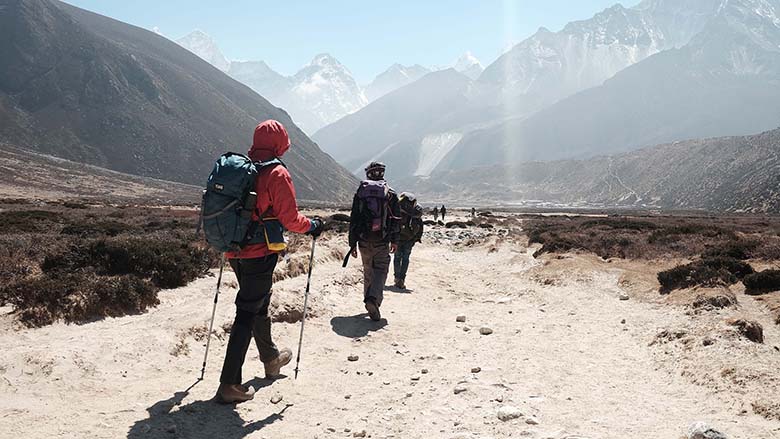
Material
Aluminum and carbon fiber are the two most used materials in the manufacture of trekking poles. The carbon is lighter, stiffer, and generally stronger, but with a blow, it will dent or even crack. Comparatively, aluminum is slightly heavier, but its impact resistance is greater.
Size Of The Rosette
The size of the rosette of the canes depends on the activity you are going to perform. Most manufacturers of trekking poles have different hole diameters, and therefore the rosettes are not interchangeable. However, many manufacturers use standard measures to benefit the user, such as Leki and Black Diamond (manufacturers of maximum mountain material quality). When you buy new rosettes for your canes, take them to the store to make sure they fit or find a different brand that fits your canes. The larger rosettes are better for snow, but they get hooked on roots and shrubs when you go hiking. Some companies make 3/4 of a rosette, but the same thing happens. If you make long routes through the snow, it is essential for the type of rosette to go safer and more comfortable, besides the use of snowshoes.
Shock Absorbers
Do the shock absorbers work on the trekking poles? There are many people who say they do not perform any function. Many people assure that the impacts are perceived as equal, so the shock absorbers do not make the trekking poles more comfortable. Also, stability is lost when passing between the rocks of the streams or at moments where you need additional balance. So from a critical point of view about whether or not you need these shock absorbers, do not buy them simply because they seem more advanced because you are not going to notice an improvement.
Some Tips On Shock Absorbers
The shock absorbers of the trekking poles are especially useful when making downhill roads, where your body suffers the most impact, especially the knees. Many damping poles offer a feature where you can deactivate the shock feature. This is very to avoid using them while you are climbing a mountain. Another good time to dispense with this feature is while crossing by rivulets with stones or walking on a trunk that crosses a river, which prevents you from losing your balance.
Weight
The weight is something to keep in mind because we do not only carry trekking poles in our mountain equipment. If we compare the weight of trekking poles with more substantial items like a tent, it does not seem to see any weight difference between the different trekking poles. Most sticks have a weight difference of about 300 grams, the most notable difference being 400 grams, 200 grams per arm. This may seem insignificant at first, but when you raise your arms thousands of times a day while hiking or any other activity, believe me, you will notice the difference in weight as if they were kilos. This is where influence and fatigue savings add up. Finally, people who are reluctant to carry canes usually change their minds when they try very light poles.
Material And Design Of The Handles
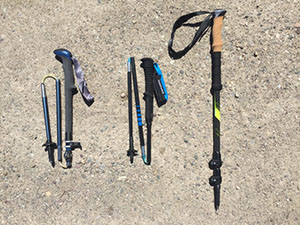 There are numerous styles of handles available and the elements most used in its manufacture are cork, rubber, and foam. Each of these materials offers different, advantages, and odd disadvantages.
There are numerous styles of handles available and the elements most used in its manufacture are cork, rubber, and foam. Each of these materials offers different, advantages, and odd disadvantages.
Cork Handles
- In general, cork handles are favorites because they adapt to the shape of the hands perfectly.
- On the one hand, they are cooler than rubber handles.
- Compared with foam, they are heavier and somewhat softer.
Rubber Handles
- They do not absorb water, the cork can absorb a little moisture, and the foam absorbs more.
- The rubber grips are perfect for people who want to use their mountaineering poles, with snowshoes, skiing, or other winter sports.
- There are people who walk in hot climates or have particularly sweaty hands `so rubber handles are annoying when sliding over long distances.
- Rubber cuffs also tend to be the heaviest of all grip materials.
Foam Handles
- The trekking poles with foam handles transmit less cold sensation, something that is not a problem for most backpackers but a more important factor for climbers and mountaineers.
- The foam grips are a little softer, minimize friction, and keep the hands slightly more refreshing than the cork and even more in comparison with the rubber.
- In addition to keeping your hands cooler, foam handles can absorb water and snow, so they are not recommended for colder climates.
- The foam is the lightest of all the grip materials and is the one with which the lightest poles are manufactured.
Easy To Save
This is more important for some people than for others. Climbers, mountaineers, and some backpackers need the ability to carry their poles even sometimes inside their backpacks, therefore, the shorter they are, the better. Another advantage of having shorter canes is that they are easier to transport and you can store them more easily in your backpack. If you do not plan to travel much then the length will not be so problematic.
Versatility
Versatility refers to how many things your canes can do, for how many different situations are right. Comparing rods individually, each one is better or worse depending on the use that is given: hiking, hiking, trekking, climbing, mountaineering, skiing or to use with rackets. The sticks that are made shorter, those of three sections, are generally more comfortable to carry on the back tied to the backpack using straps. On the other hand, the canes with shock absorbers are more pleasant for the hard paths while in rocky terrain they can be annoying when reducing the balance. Also, the canes with shock absorbers are somewhat more substantial.
How To Make Your Trekking Poles Last Longer
One tip to extend the life of your best trekking poles is, after each use and especially on wet walks with snow or moisture, let them dry before storing. In this way, you will avoid that moisture accumulated during long distances weaken or spoil the materials with which they are manufactured.

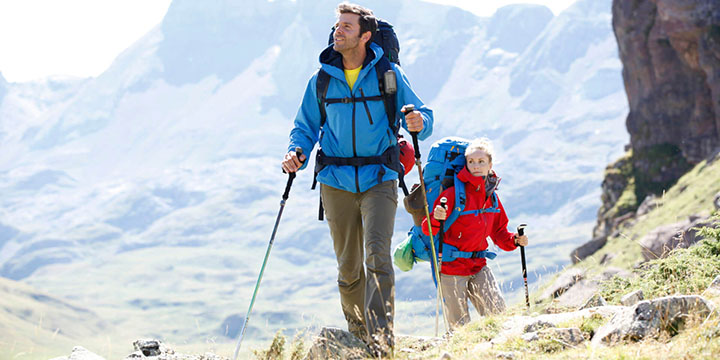

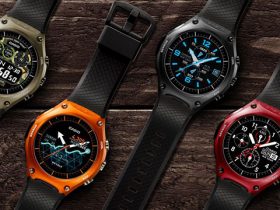
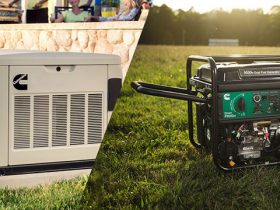

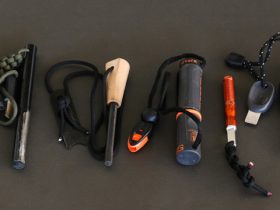
Leave a Reply